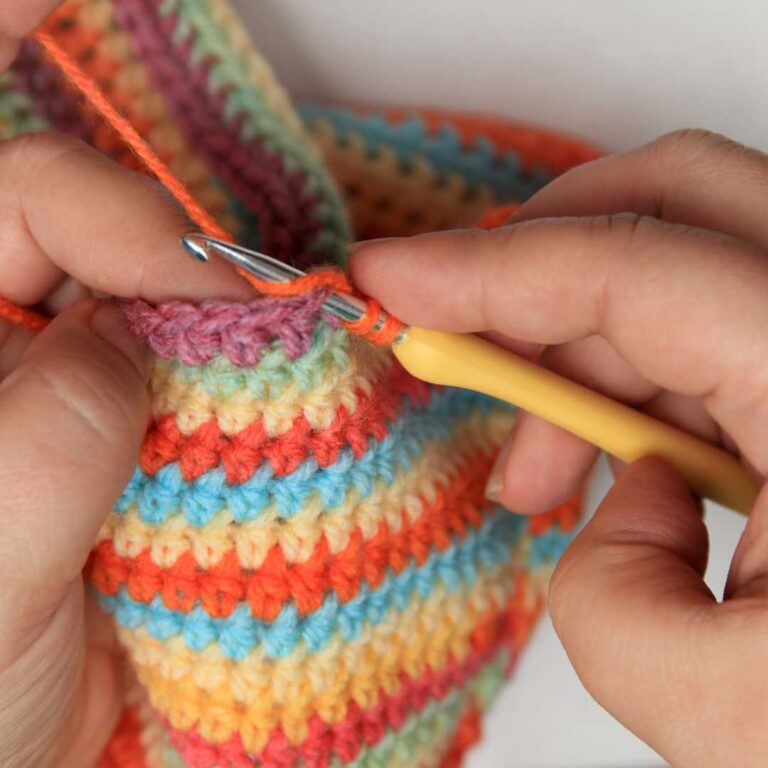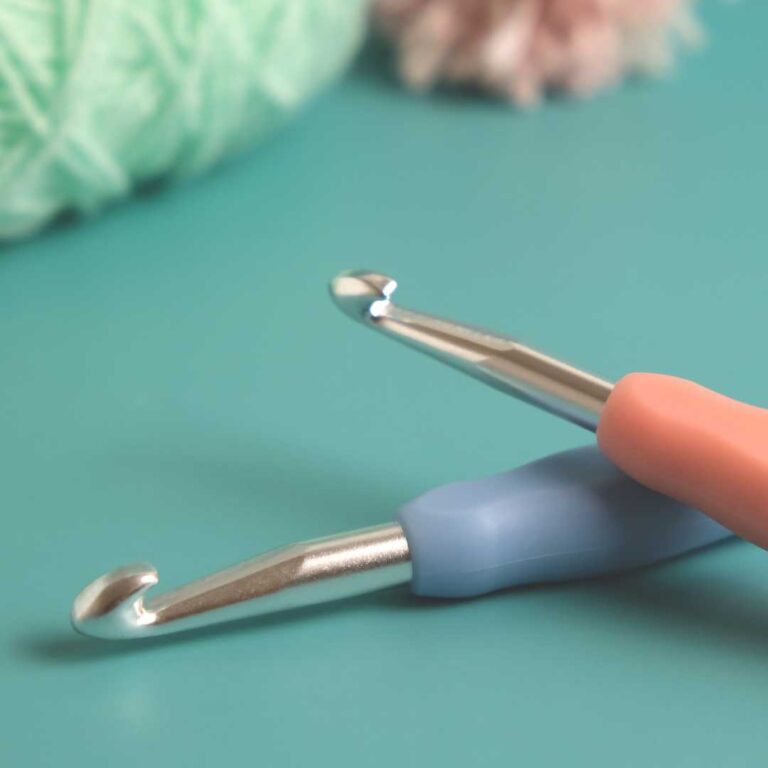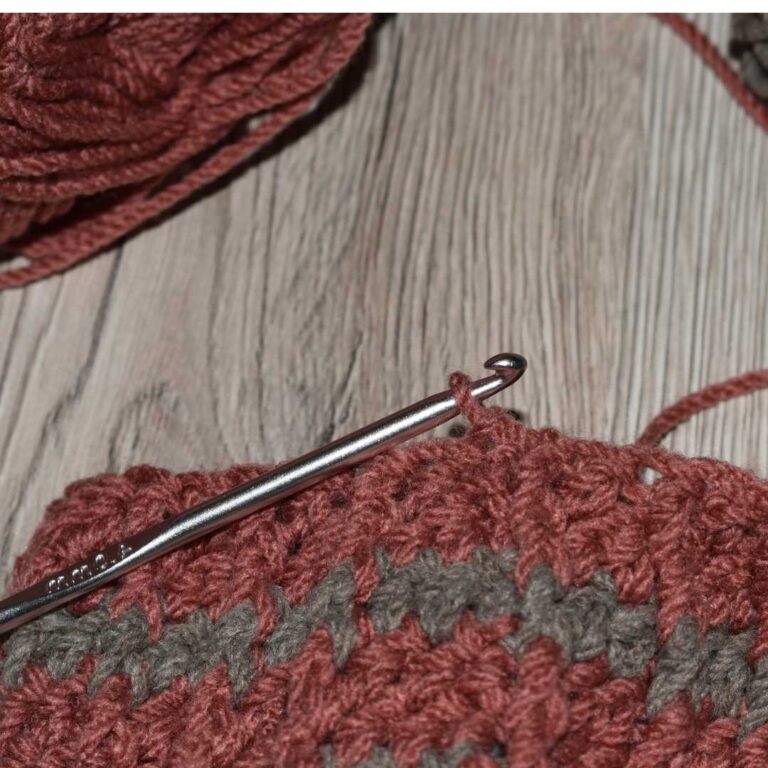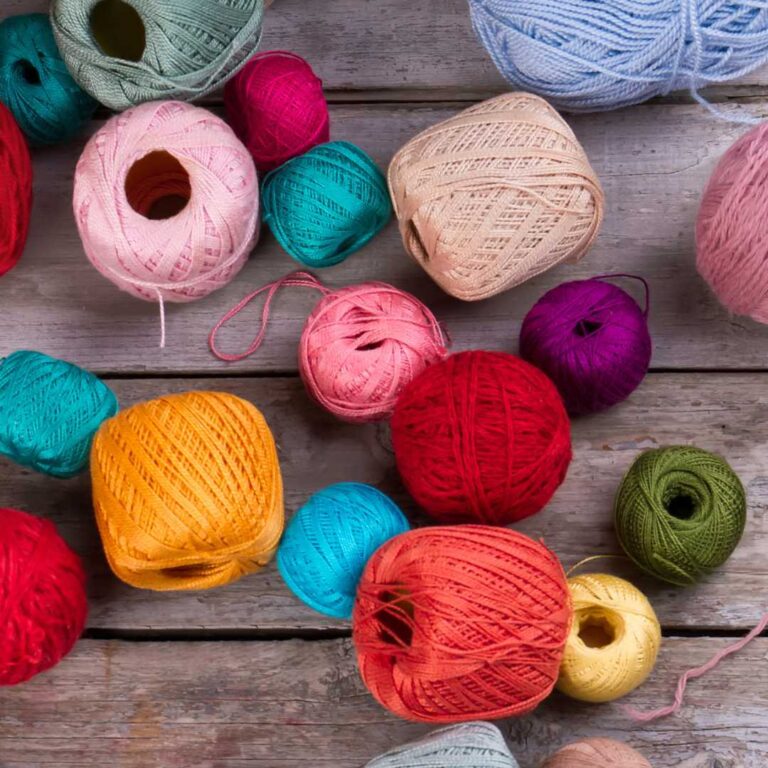If you are just getting started with crochet, one of the most crucial aspects to understand is yarn weights. Yarn weights not only determine the thickness of the yarn but also influence the outcome of your project, including its texture, drape, and overall appearance. In this beginner’s guide, we’ll dive deep into the world of yarn weights, exploring what they are, how they’re categorized, and which projects they’re best suited for.
What Are Yarn Weights?
Yarn weight refers to the thickness or diameter of the yarn strand and is measured by (WPI). Yarn weights are categorized using a standardized system ranging from 0 to 7, each representing a different thickness from the delicate strands of 0-weight lace to the chunky fibers of a 7-weight jumbo yarn.
Understanding yarn weights is essential for selecting the best yarn for your project and achieving the desired results. It can also help you determine the weight of unlabeled or discarded yarn by counting the number of strands that fit inside one inch of length.
Common Yarn Weights Explained
Lace-Weight (0)
Lace-weight yarn is an incredibly fine and delicate type of yarn. Its thin and lightweight texture makes it ideal for intricate and delicate projects. The yarn is so fine that crocheters use it for creating intricate shawls, heirloom doilies, and other finely detailed garments that require a delicate touch. With its delicate texture and lightweight feel, lace-weight yarn is a popular choice for those who want to create beautiful and intricate pieces that are both elegant and durable.
Fingering/Sock Weight (1)
Fingering-weight yarn is a versatile type of yarn that is slightly thicker than lace-weight yarn. It is perfect for creating delicate, lightweight projects such as socks, shawls, and accessories.
Due to its fine texture, fingering-weight yarn is ideal for creating intricate stitch patterns and achieving a beautifully detailed finish. Additionally, it is available in a wide variety of colors and fiber blends, making it an excellent choice for a range of crochet projects.
Sport Weight (2):
Sport weight yarn is a kind of yarn that is thinner than DK weight yarn but a bit thicker than fingering weight yarn. It is commonly used for crocheting projects that require a lightweight and delicate texture. It is perfect for making baby clothes, lightweight sweaters, hats, and other accessories.
The yarn consists of fine fibers, which makes it soft, comfortable, and easy to handle. This type of yarn is also great for creating lace patterns due to its delicate texture.
DK (Double Knitting) Weight (3):
DK weight yarn, also known as double-knitting yarn, is a versatile yarn and perfect for a wide range of knitting and crocheting projects. This yarn is medium-weight but not as thick as worsted yarn.
One of the advantages of DK light yarn is that it is perfect for creating lightweight yet warm clothing items, such as sweaters and cardigans. It is also ideal for making baby blankets, scarves, hats, gloves, and other accessories.
DK weight yarn comes in a variety of fibers, including wool, alpaca, cotton, and acrylic. It is popular with crocheters due to its versatility, comfortable weight, and usefulness in creating a wide variety of projects.
Worsted/Aran Weight (4):
Worsted, or aran, weight yarn is a versatile medium-weight yarn perfect for a wide range of knitting and crochet projects, including afghans, sweaters, hats, mittens, and even scarves and shawls. This type of yarn is typically made from wool or a wool blend, but cotton, acrylic, and other fibers are common too. Its smooth texture and easy stitch definition make it an excellent choice for cables, textured stitches, and colorwork. Additionally, worsted/aran weight yarn is widely available in many colors and fiber blends, making it easy to find the perfect yarn for your project.
Bulky weight (5):
Bulky-weight yarn is a type of yarn that is thicker and heavier than worsted-weight yarn. This type of yarn is ideal for quick projects, as you can stitch it up faster than others.
The thickness of the yarn also makes it perfect for creating warm and cozy items such as hats, scarves, and blankets. Its weight and texture give the finished product a soft and chunky feel, making it a popular choice for winter items. Bulky weight yarn comes in lots of colors and textures for your projects.
Super Bulky Weight (6):
Super bulky weight yarn is the thickest and heaviest yarn available on the market. It is perfect for those who want to create fast-finish projects as it works up quickly. This yarn is ideal for chunky hats, cowls, and home decor items like chunky blankets or pillows. Due to its thickness, super bulky yarn can add a cozy and warm feel to your projects, making it perfect for winter wearables or home decor. The texture of this yarn is usually soft and fluffy, providing a plush and comfortable feel to your finished product.
Jumbo Weight (7):
Jumbo-weight yarn is a type of yarn that is thicker and heavier than other yarns. Its thickness makes it perfect for creating cozy and warm oversized blankets, rugs, and pillows. Most jumbo yarn comes from natural fibers such as wool, alpaca, or cotton, but it can also be synthetic. The yarn’s thickness means you can complete projects quickly. It’s an excellent choice for those who want to create large, impressive pieces without spending months on end working on them.
Choosing the Right Yarn Weight for Your Project
When selecting yarn for your project, it’s essential to consider the intended use, desired texture, and gauge requirements. Always check the yarn label for information on weight, fiber content, and recommended hook size. It’s also a good idea to swatch and measure your gauge to ensure the best results.
Conclusion
Understanding yarn weights is a fundamental skill for every crocheter. By familiarizing yourself with the different yarn weights and their characteristics, you equip yourself to choose the best yarn for your projects and achieve beautiful, professional-looking results.
So go ahead, explore the world of yarn weights, and let your creativity soar!
I hope you found this beginner’s guide to yarn weights helpful. If you have any questions or tips for working with different yarn weights, I’d love to hear from you in the comments below!
Learn more about me and why I love crochet so much, and check out my Etsy shop HERE.






